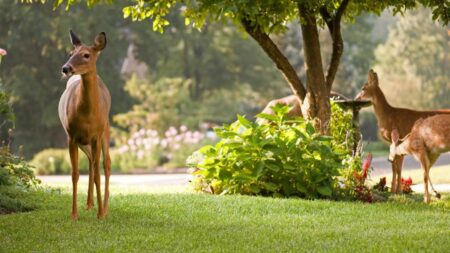NO SLOWING DOWN
 Most of you have heard our exciting news about our name change that was recently publicly announced and I was both amazed and encouraged by all your positive responses and genuine messages of support. Our entire team is very excited about our new brand and it’s been hard to keep it secret from all of you (except those on our eNewsletter list) while diligently working behind-the-scenes to make this change go smoothly for the official unveiling next month.
Most of you have heard our exciting news about our name change that was recently publicly announced and I was both amazed and encouraged by all your positive responses and genuine messages of support. Our entire team is very excited about our new brand and it’s been hard to keep it secret from all of you (except those on our eNewsletter list) while diligently working behind-the-scenes to make this change go smoothly for the official unveiling next month.
In the meantime, we are beginning another busy lawn care season. Fall isn’t just about clearing leaves and placing mums and pumpkins on front steps. Early autumn is when you’ll find us aerating, fertilizing and seeding. We’re also planting trees, shrubs, perennials and spring flowering bulbs, winterizing irrigation and sprinkler systems, and addressing any unsightly or problem areas on your property. Fall is also the time clients like to discuss their ideas and start planning those big outdoor projects for next spring. What’s on your wish list? Let us know what we can do to help you fall in love with your yardscape!

DEER CONTROL
 Deer troubles? While deer can be fun to watch, they can cause significant damage to your plants and trees. We have been using humane deer control practices for years with fantastic results.
Deer troubles? While deer can be fun to watch, they can cause significant damage to your plants and trees. We have been using humane deer control practices for years with fantastic results.
Deer cause damage by feeding on plantings and rubbing their antlers and heads against trees causing abrasions and compromising the bark. Although deer have plentiful food in our rural surroundings, your tender, tasty and easy to reach plants are irresistible. It is also difficult to encourage deer to move out of an area, but finding the right solution for your circumstance can save your yardscape.
The extent of damage often determines the strategic placement of plants. Those that are preferred by the deer can be planted closer to the house, in a fenced area or put inside a protective border of less tempting plants. While no plant is “deer proof” to these hungry browsers, there are many that deer simply do not like as much and these varieties can be used to discourage them.
There are also two types of deer repellent that we use with good results. Contact repellents are applied directly to plants which causes them to taste bad to the deer. Area repellents are placed in and around problem areas and repel deer with their foul odor.
Lastly, fencing is a common tactic employed by frustrated homeowners but they are not always appealing or easily installed on some properties. The most common deer-proof fencing is 8 feet tall and made of wire or sturdy woven plastic netting fastened to wooden garden posts.
Each of these methods can be used separately or together to best solve your deer issues and each have their own pros and cons. Contact your account manager or call the office if you want to discuss solutions for your property.
Learn more about DEER CONTROL
“I’m so glad I live in a world where there are Octobers.”
~ L. M. Montgomery, Anne of Green Gables
